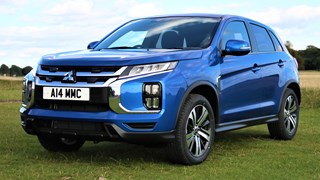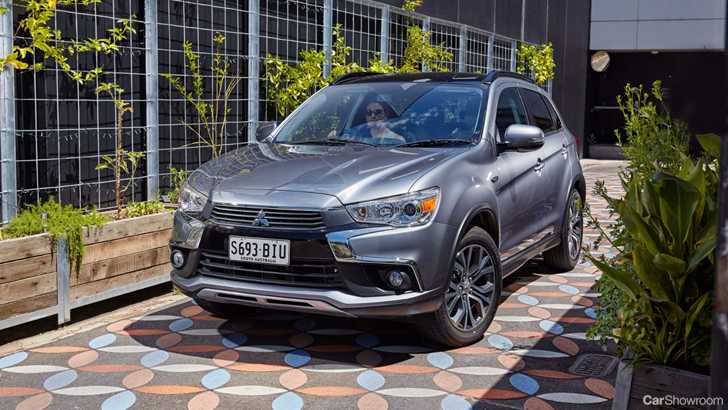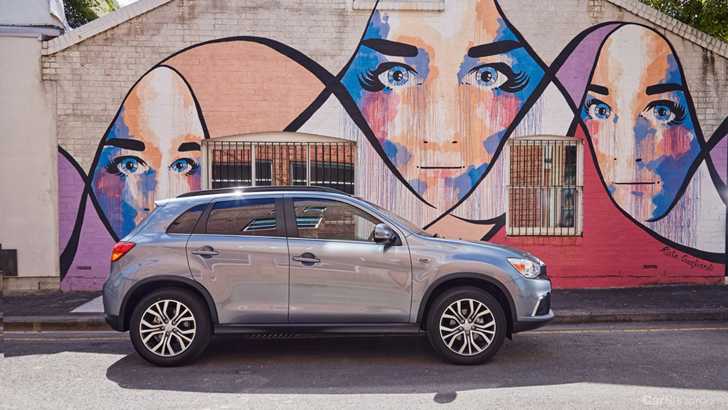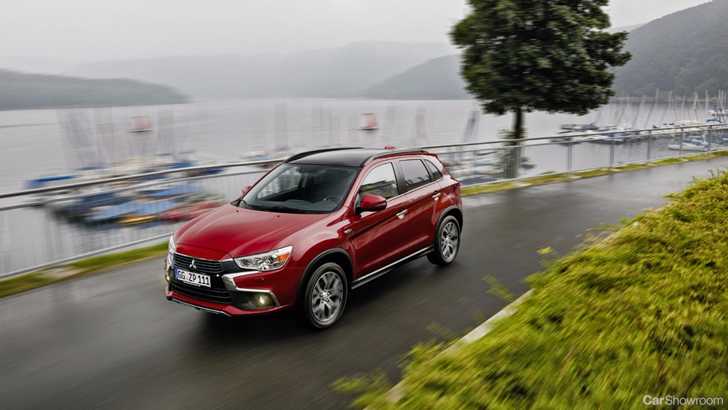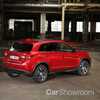The Mitsubishi ASX is a compact SUV - or crossover, however you’d like it sliced - that’s been with us in its current third-generation form since 2010. It’s a smart looking car like many Mitsubishis in their current line-up.
It recently underwent a facelift in 2016 to spruce it up in the face of a fast-rising wave of competition from seemingly every angle. We have the Nissan Qashqai, Honda HR-V, Toyota C-HR, Mazda CX-3 and Subaru XV from Japan. Elsewhere comes the Peugeot 2008, Renault Captur, Hyundai Tucson, Kia Sportage, and Ford EcoSport.
In light of these rivals, the older ASX does look a little outgunned by the more sophisticated powertrains, newer tech, and fancier designs. Mitsubishi and their ‘Dynamic Shield’ front end struggle to concoct a counterargument as this, for the most part, is an unchanged car from when it was first brought to market.
But Mitsubishi has always been persistent, and has endowed the sharp-looking ASX with plenty of equipment, a commodious cabin, a five-year warranty, and some commendable road manners that, when paired with a particularly torquey turbodiesel, makes it an effective and practical everyday instrument on the road.
The ASX is available in Australia in either LS or XLS trim, spread over two engine options and a choice of two or all-wheel drive.
Exterior
“The ASX’s angular lines are mostly unchanged since its 2010 debut, but they’ve aged well, to the point where the ASX really doesn’t look as old as it is.” - CarsGuide
Side by side, the ASX doesn’t really look any less ‘new’ than, say, the Honda HR-V. There are subtle character lines that run down the car’s body, and the large grille does make a strong impression to emphasise that this is no pushover, at least visually.
There are also standard 18-inch alloy wheels that lend a lot of flair to the ASX where the competition hands smaller, far less imposing wheels in their equivalent base models. Paired with the chrome accents that frame the fog lamps and envelop the exhaust tips, you certainly get a more expensive looking car for your money.
Engine and Drivetrain
“To give it a bit more oomph, the ASX has an all-wheel-drive mode that’s activated by hitting a big fat button next to the gear stick – nice and simple.” - Motoring
Both the LS and XLS variants get a choice drivetrain, with the 2WD powered by a petrol engine and the AWD version receiving drive from a 2.2-litre turbodiesel, both with an identical engine tune.
Starting with the petrol, it’s a 2.0-litre naturally aspirated MIVEC four-cylinder that churns out 110kW and 197Nm. Only the least expensive model receives the option of having a manual transmission whereas the rest get either Mitsubishi’s INVECS continuously variable transmission (CVT) or a 6-speed torque converter automatic.
Moving on to the turbodiesel, this engine offers substantially more torque at 360Nm though it outputs the same 110kW as the petrol. What’s more, the turbodiesel is more economical with its fuel, claiming 6.0-litres/100km over the MIVEC’s 7.7-litres/100km. That said, while it is definitely more frugal than the petrol alternative here, it’s not as impressive as some other engines of similar capacity.
The diesel is definitely the one to get as it’s far better at the kind of accelerative bursts that one finds doing so many times a day, whether in the city or out on the highway. The petrol is a good performer too, though, and can chase the redline with real enthusiasm if not bottlenecked by the CVT, but in most situations is outclassed by the turbocharged petrol motors its many rivals of today.
Interior
“Mitsubishi hasn’t updated the climate control switchgear with the latest model refresh, meaning that it still retains the first-generation dials that feel rather cheap and nasty.” - CarAdvice
The ASX certainly feels larger inside than it looks. Its exterior dimensions do match up with other crossovers of this size. But what points it does gain for having a commodious interior is countered by the decidedly disappointing design and cabin ambiance.
To its credit, it’s a well made interior, but that cannot mask what is ultimately quite a boring place to sit in. There’s a lot of dark textured surfaces, interspersed with glossy finishes that don’t do it any favours aesthetically. As a consolation, the XLS’ standard panoramic glass roof might brighten up what is otherwise quite a drab cabin.
There are cloth seats in the LS trim while the more expensive XLS receive faux leather upholstery. Both are comfortable nonetheless and offer rather good support.
If you’re willing to overlook the strictly function over form approach here, most of the materials themselves are soft to the touch and the layout is very easy to understand with clear instruments and thought-out control placement.
Visibility is also quite good, handy for those complex in-town manoeuvres, making it feel much more like a hatch than anything with all-wheel drive. Passengers in the rear seats will have little to complain about with regard to comfort as the ASX boasts generous legroom and headroom.
Pop the rear hatch and you’ll discover a decently sized 416-litre boot that can be expanded to 1,193-litres with the rear bench folded, making for a relatively flat load bay that’s helped by the negligible load lip.
Behind The Wheel
“In dry conditions it benefits from having good grip through faster corners, which also allows it to respond to mid-corner steering adjustments with a confidence-inspiring and stable change of direction.” - Autocar
There’s a trend developing that necessitates that crossovers also handle well, and to accomplish this automakers fit firmer suspension, which polarises the customer base who may or may not favour this over a pliant ride. The Mitsubishi ASX leans more toward the comfort side of things (even with those big 18-inch alloys) while still offering an above average level of dynamic ability.
It does roll along tighter bends more than say, a Mazda CX-3, but beyond this the car can hang onto the line without succumbing to understeer. This is especially true for the models fitted with all-wheel drive, letting the engine send power to the front axle should it sense it needs more front end bite.
Though, while this makes it a more effective machine point to point, the ASX’s drive still cannot be classified as engaging. The steering is light but can often feel distant and units fitted with the CVT give little sense of how the road is making the engine behave.
Let it settle, though, and the ASX is discovered to be far better with a more relaxed driver behind the wheel, whether in urban driving or highway cruising. The softer ride plays into this by offering a commendably composed experience over bumps and ruts.
Safety and Technology
“…the touchscreen on high-spec cars is rather fiddly and doesn’t always respond quickly enough when you press it.” - WhatCar
ANCAP tested the ASX recently in November 2016 following the model’s facelift, to which it gave it a 5-star rating with its all-round airbags and a decent list of standard safety equipment such as stability control, hill start assist, and a reversing camera.
Unfortunately, active safety systems like autonomous emergency braking, rear cross traffic alert, and lane keep assist aren’t available even as an option. There is, however, a standard 6.1-inch infotainment unit that does a decent job at streaming Bluetooth audio through its 6-speakers. But it’s a definite step behind the more integrated systems found in cars from Mazda, Honda, and Ford, and there’s no support for Apple CarPlay or Android Auto either.
Verdict
The Mitsubishi ASX is far from being the weak link in the chain of crossover offerings on the market right now. It’s an accomplished cruiser with sharp looks and is one of the most practical cars in its class. Neither does it move the game forward nor does it fall behind in any glaring way, which is the car’s main fault.
These days, getting the basics right often isn’t enough. Automakers, especially in what is currently the most competitive corner of the new car market, are looking to exploit every edge their product has over the nearest rival.
With this in mind, the Mitsubishi offering seems to be caught on the back foot. If it’s no-nonsense motoring you’re after paired with a strong equipment list and good value, the ASX could be right up your alley. Otherwise, there’s still plenty of choice.
Autocar - 3.5/5 - “In almost every tangible way it is an unexceptional car. But analyse the reasons why you might buy one and it becomes clear that it is up there with the most sensible cars in its class.”
CarsGuide - 2.5/5 - “At the heart of it, the ASX bears up well, but its age – and Mitsubishi’s straitened circumstances during its development – mean that modern rivals such as the Mazda CX-3 have overtaken it as the first choice in the segment.”
CarAdvice - 7/10 - “While there are better buys to be had out there, the Mitsubishi ASX is there for buyers that are happy to sacrifice the modern appeal of newer vehicles on the market such as the Mazda CX-3 and Honda HR-V, which both offer equally compelling purchase options.”
WhatCar - 3/5 - “The Mitsubishi ASX is comfortable, practical, and keenly priced, but many rivals are more refined and more efficient.”
Telegraph Cars - 2/5 - “A reliable and practical car from a well-regarded Japanese manufacturer, but a rattly passenger experience makes this model feel a little long in the tooth. Hard to recommend over more refined – and popular – mainstream rivals.”
Motoring.com.au - 74/100 - “A seven-year-old model at its core, the latest iteration features modern comforts like keyless entry and ignition, and auto wipers and headlights, plus a particularly striking glass roof. But on-road the ASX has the ‘classic’ feel of a diesel-powered SUV.”
